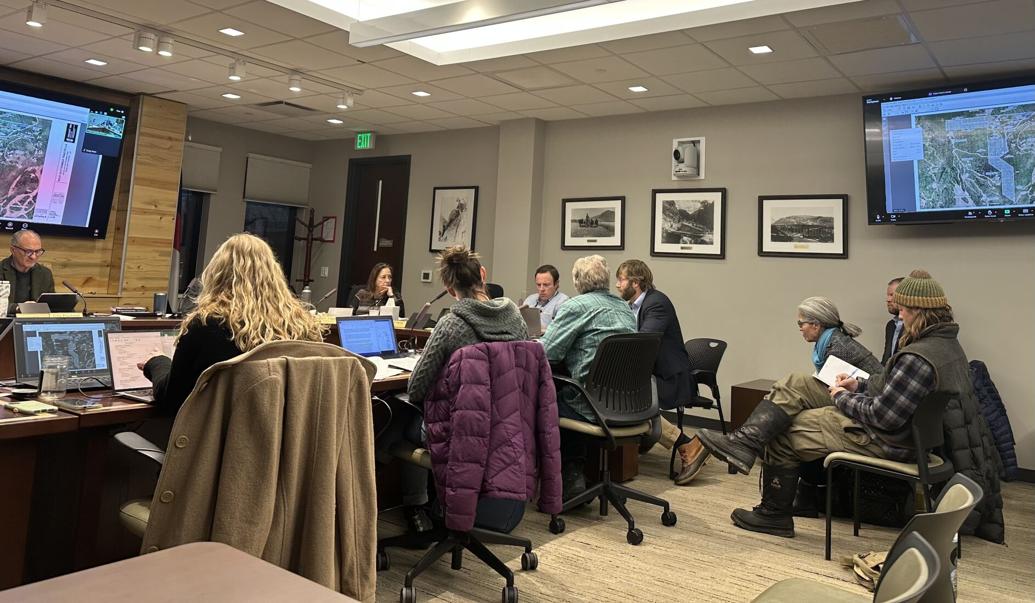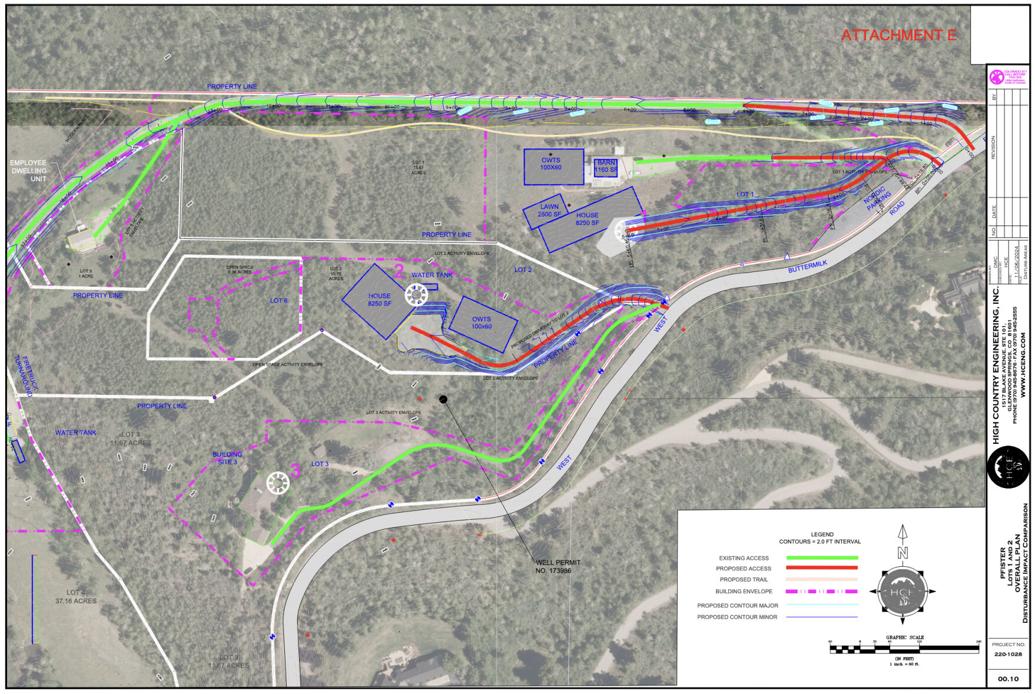

The ownership of two large lots off of West Buttermilk Road received preliminary approval to subdivide the property on an ask that tested the Pitkin Board of County Commissioners’ willingness to break up the rural land.
After a protracted discussion on fences, water and floor area, the BOCC unanimously approved a conceptual subdivision and planned unit development for 1833 and 1901 W. Buttermilk Road at their meeting Wednesday.
The property owners, SEP Residence Trust (Suzanne Pfister) and NMP Residence Trust (Juliana Pfister) said they are planning for their families’ futures by subdividing the land.
Tracts 1 and 2, 85.3 acres total, of the West Buttermilk Pfister Tracts Subdivision will be split into six lots — four with single-family homes on each one, one with an employee dwelling unit and one serving as common open space.
Lot 1 will be 15.9 acres and allow for a 1,160-square-foot agricultural barn, a new driveway and the replacement of the existing single-family home with a new one of up to 8,250 square feet of gross floor area. Permission for 2,500 square feet of the property would need to be won through the county’s Growth Management Quota System or acquired through a transferrable development right.
Lot 2 will be 19.7 acres and allow for an 8,250-square-foot residence and a new driveway.
Lot 3 will be 10.7 acres, retain the existing driveway and allow for the replacement of the existing single-family home with a new residence of up to 8,250 square feet of gross floor area.e and a $6 million COVID-19 response and recovering package that provided funds for mental health services, COVID-19 testing, small business assistance and more.

Lot 4 will be the largest with 37.2 acres but the single-family residence will be limited to 5,750 square feet, per an agreement with the property owner. Each lot will have its own septic system.
With 55 acres of the lots to be held in a conservation easement, the BOCC still expressed concern for wildlife impacts. The western stretch of the lots is a critical elk habitat.
The application included a letter from Kurtis Tesch, local district wildlife manager for Colorado Parks and Wildlife, regarding the impact of larger versus smaller floor area.
“I appreciate how the homes are clustered for the most part and being located next to existing structures,” Tesch wrote. “I understand some are going to be torn down but the disturbance is already there and so that seems appropriate.”
At the final hour, Suzanne Pfister agreed to limit the house on Lot 4 to 5,750 square feet — despite receiving authorization for 8,250 square feet of floor area through the GMQS.
Commissioner Greg Poschman said though the Pfister situation was slightly different than others, he wanted the county to place an emphasis on building smaller.
“I love the idea of being able to offer incentives to go smaller,” he said. “I love the idea of being able to offer more ability to do the right thing — building smaller houses.”
The county updated its land-use code for a maximum 9,250-square-foot floor area in 2023, with more stringent limitations in certain zone overlays.
Other conditions of approval granted at the meeting include installing dog fencing for wildlife protection purposes, addressing expirations on exempt well permits, creating a landscape plan for tree screening, and prohibiting further subdivision.
At their first reading of the proposal on Dec. 6, the commissioners expressed skepticism about the project for its impact to wildlife habitat and a precedent for excessive subdivision of large lots in more rural areas of the county.
Commissioner Francie Jacober reversed her nay vote after she said the applicants updated their application to comply with the land-use code and address wildlife impact concerns.
“It’s really not our bailiwick to tell people they have to keep their property or sell it or whatever,” she said. “And I think that they’ve held onto this land for a long time, and now they have the right to do what the law says they can do.”